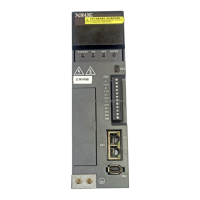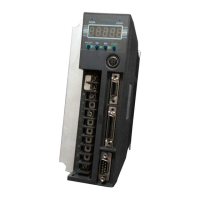Phenomenon: Running jitter, slow
response
Phenomenon: smooth
operation and slow response
Phenomenon: smooth
operation and fast response
Note: The above curves only show the effect of the parameters, not the real running curves.
5.1.4 Torque disturbance observation
Disturbance observer can reduce the influence of external disturbance on servo system and improve the
anti-disturbance ability by detecting and estimating the external disturbance torque of the system and
compensating the torque command.
If the soft mode is selected in the auto-tuning mode, the disturbance observer will be closed automatically, and the
gain of the disturbance observer will not change. If the fast positioning or fast positioning (control overshoot) is
selected, the disturbance observer will be opened automatically, and the gain of the disturbance observer will be
modified to 85. The relevant parameters of this function no need to be set manually by users.
Turn-off of disturbance observer
Turn-on of disturbance observer
Disturbance observer
gain
5.2 Rotary inertia presumption
5.2.1 Overview
Rotational inertia estimation is the function of automatic operation (forward and reverse) in the driver and
estimate the load inertia in operation.
Rotational inertia ratio (the ratio of load inertia to motor rotor inertia) is a benchmark parameter for gain
adjustment, and it must be set to the correct value as far as possible.
5.2.2 Notes
Occasions where inertia cannot be presumed
➢ Mechanical systems can only operate in one direction
The occasion where inertia presumption is easy to fail
➢ Excessive load moment of inertia
➢ The running range is narrow and the travel is less than 0.5 circles.
➢ The moment of inertia varies greatly during operation.
➢ Mechanical rigidity is low and vibration occurs when inertia is presumed.
Notes of Inertia Presumption
➢ Since both directions are rotatable within the set range of movement, please confirm the range or
direction of movement; and ensure that the load runs in a safe journey.

